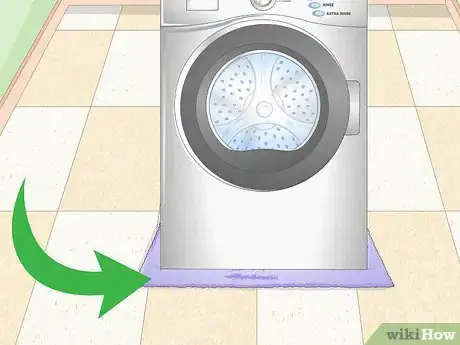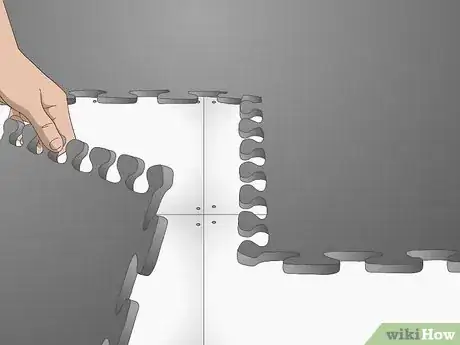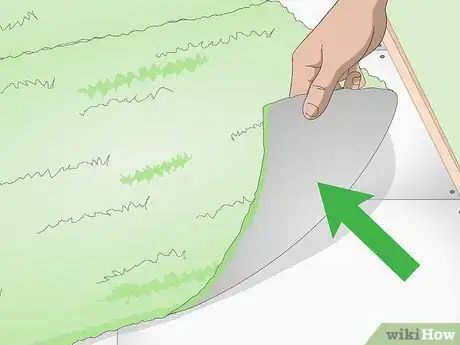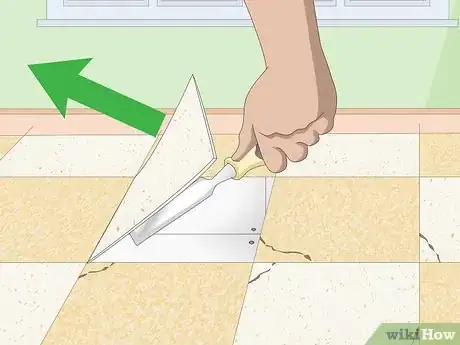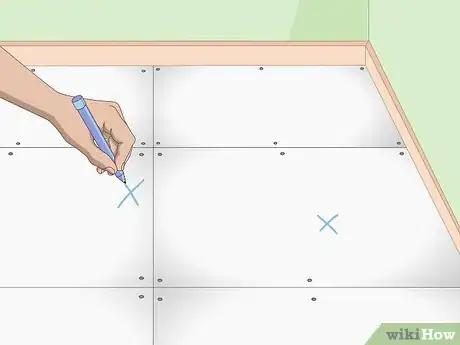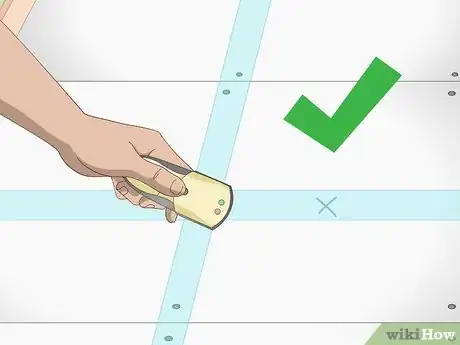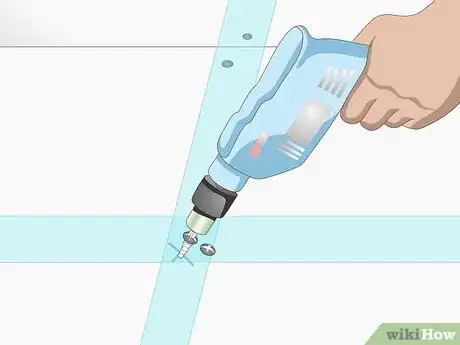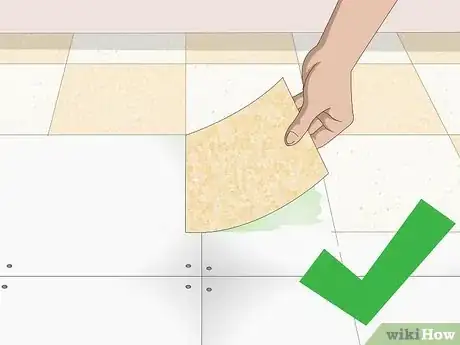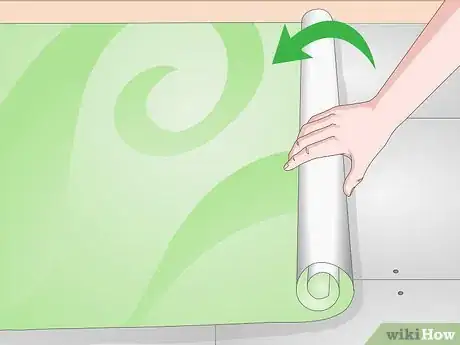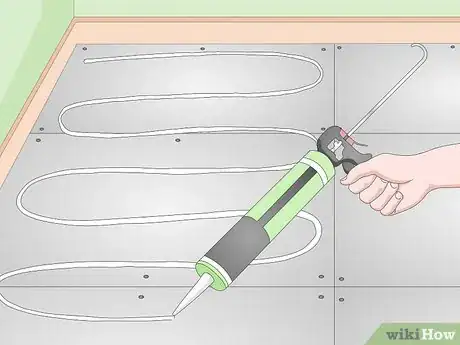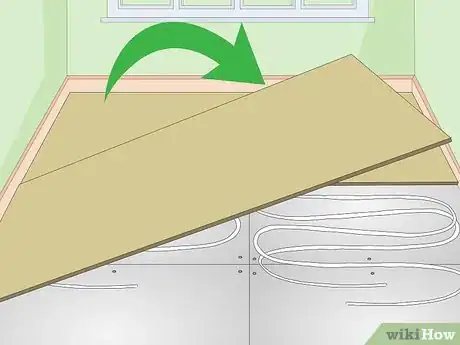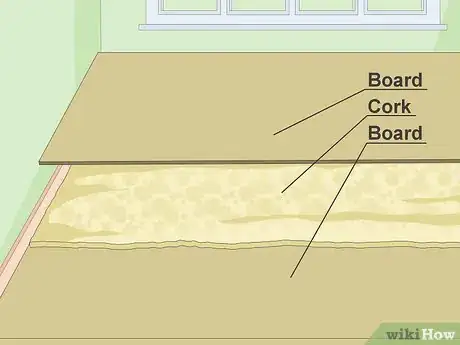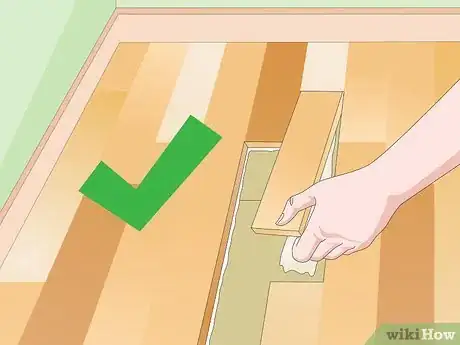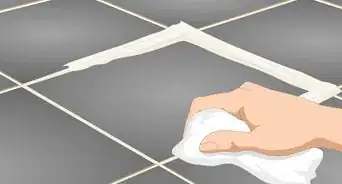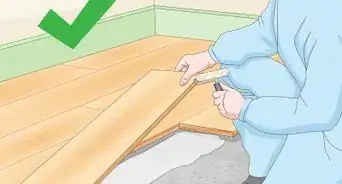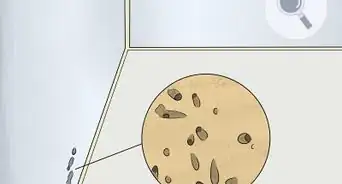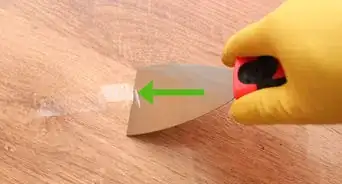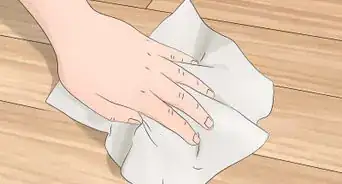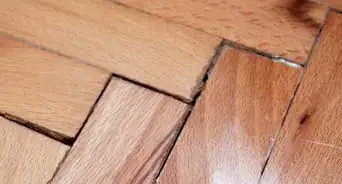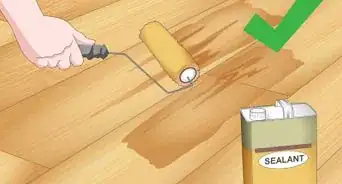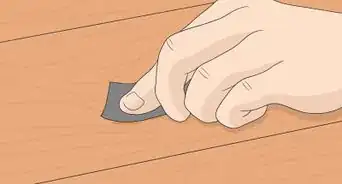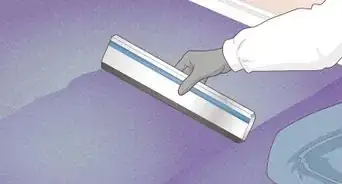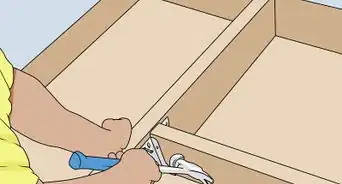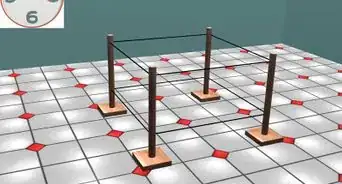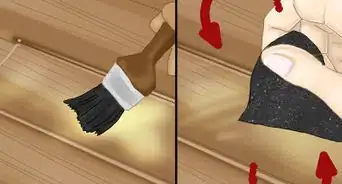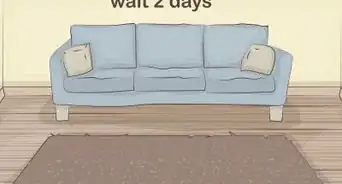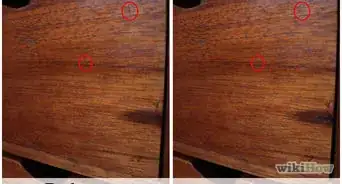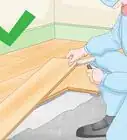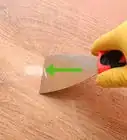This article was co-authored by Mark Spelman and by wikiHow staff writer, Sophia Latorre. Mark Spelman is a General Contractor based in Austin, Texas. With over 30 years of construction experience, Mark specializes in constructing interiors, project management, and project estimation. He has been a construction professional since 1987.
This article has been viewed 245,186 times.
Flooring often produces creaks and noises in addition to amplifying sounds like footsteps. This is especially true with older buildings, poor construction, or hardwood floors. There are a number of ways you can muffle noisy floors, according to the problems of your building. You can add padding to your flooring to reduce noise from footsteps and machinery, spot fix your flooring to reduce squeaks caused by loose screws and joists, or add damping compound and a resilient underlayment to your subfloor to reduce floor noise.
Steps
Adding Padding
-
1Put a rubber floor mat under machinery to absorb noise. Rubber floor mats help absorb and reduce noise from machines in your home such as televisions, stereo systems, washers, dryers, and dishwashers. These mats, when placed directly below a machine, muffle the vibrations and reduce noise and impact.[1]
- Padded flooring products, such as the Elephant Bark Mat, are available online in thicknesses ranging from 1/5 to 3/8 inches (5 mm to 9.5 mm).
-
2Add interlocking flooring to reduce noise. Interlocking noise-absorbing flooring can easily be placed over your existing flooring in your home or garage. Simply purchase enough to cover your entire flooring and lay the padded tiles down, interlocking the sides to connect them.
- This product can be easily cut to fit to the edges of your room. It’s also easily cleaned, and is made of antimicrobial material.
Advertisement -
3Install carpeting with a thick pad underneath. Adding padding and carpet to your flooring will greatly reduce noises such as footsteps. The thicker the pad under the carpeting, the more noise reduction you will receive. Carpet and padding can even be installed over your existing hard floor, if necessary.[2]
Reducing Squeaking
-
1Remove your current flooring. You’ll need to remove your current flooring to gain access to the subfloor. Remove your carpet, hardwood flooring, linoleum, or tile. You may be able to do this to only the offending part of the floor, or you may want to remove all the flooring to gain access to the entire subfloor.[3]
-
2Mark the squeaky floor areas. Locate, mark, and focus on the squeaky areas during this process. If you are working with hardwood floors and you have spent a lot of time in the building, you will probably be familiar with very squeaky or weak areas.[4]
-
3Locate the floor joists. Use a stud finder to locate the joists under your subflooring. Squeaky floors are often caused by gaps between the joists and the subflooring.[5]
-
4Drill deck screws into the joists. Drill in one or two 3.5-4 inch (8.9-10.2 cm) deck screws at an angle into each squeaky joist. This will help to strengthen the supporting joist and stop noise. You may want to do the same to surrounding joists while you have access to the subfloor. This will screw down the subfloor and make it less noisy.[6]
-
5
Using Damping Compound and Underlayment
-
1Remove your current flooring. You’ll need to remove your current flooring to gain access to the subfloor. Remove your carpet, hardwood flooring, linoleum, or tile.[8]
- Before removing the floor, check to see if you can access your subflooring from underneath. This may be possible if your home has a crawlspace.
-
2Apply a damping compound to the subfloor. Choose a noiseproofing compound, such as Green Glue, to apply to the subfloor. Use a caulk gun to distribute the product evenly across the subfloor. Two tubes of compound should be used for every 4 foot by 8 foot (1.2 m by 2.4 m) area.[9]
-
3Place a rigid layer on top of the damping compound. Some products, like Green Glue, must be placed between two rigid surfaces. Check the label and instructions on your product to see if this is the case. If so, place a hard board, such as cement board or medium-density fiberboard (MDF) on top of the Green Glue.[10]
-
4Lay foam, cork or rubber mat directly on top of the board. Add a resilient underlayment, such as cork, foam, or shredded rubber, on top of the rigid layer for extra soundproofing. Foam is the least expensive choice. Cork is more expensive but is a better noise insulator. Shredded rubber may be the most expensive but the added mass is most likely to provide the best solution for noise reduction.[11]
-
5Replace your flooring. Place your flooring on top of the board. You can choose to install carpet, hardwood, linoleum, or tile. All of these elements will greatly reduce floor noise.[12]
- If you’d rather not add permanent carpeting or new tile, throw rugs or area rugs are a simple and attractive way to reduce noise.
Warnings
- Do not make changes to the flooring or subflooring of your building if you do not own it. You must approach the owners of the building before working with the structure of the floor. Some owners may agree to improvements on the building, as long as the work is done by professionals.⧼thumbs_response⧽
References
- ↑ https://www.bobvila.com/articles/371-soundproof-your-floors/
- ↑ https://www.bobvila.com/articles/371-soundproof-your-floors/
- ↑ https://www.bobvila.com/articles/371-soundproof-your-floors/#.WV-HpYjyvIU
- ↑ https://www.bobvila.com/articles/371-soundproof-your-floors/#.WV-HpYjyvIU
- ↑ https://www.bobvila.com/articles/371-soundproof-your-floors/#.WV-HpYjyvIU
- ↑ https://www.bobvila.com/articles/371-soundproof-your-floors/#.WV-HpYjyvIU
- ↑ https://www.bobvila.com/articles/371-soundproof-your-floors/#.WV-HpYjyvIU
- ↑ http://www.noisehelp.com/soundproofing-a-floor.html
- ↑ http://www.greengluecompany.com/videos/applying-green-glue-noiseproofing-compound
About This Article
You can muffle noisy floors with padding that will cushion it and absorb the sound. Try placing thick rubber floor mats underneath any appliances in the room, like televisions, washing machines, or stereo systems, to reduce the noise they emit. To keep floors from squeaking, place interlocking flooring tiles over your existing floor to reduce the impact that causes it to squeak. In addition to padding, use thick carpeting or area rugs to help reduce the sound of footsteps on your floor. You can even place a thick rug over floor padding for a double layer of noise-reducing material. For tips from our Contractor co-author about how to apply a damping compound to reduce floor noise, keep reading!
